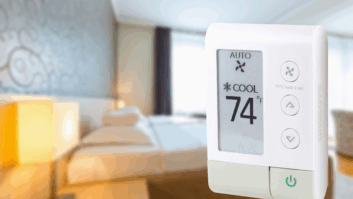 As the number of connected devices being introduced into our homes grows, there is an opportunity for equipment installation companies in the smart home. Connected devices are no longer limited to our laptops, phones and tablets, but also, include the likes of smart speakers, voice assistants, doorbells, cameras, thermostats and sensors. These devices are not only omnipresent in consumers’ everyday lives, but they have become essential commodities that are routinely used.
As the number of connected devices being introduced into our homes grows, there is an opportunity for equipment installation companies in the smart home. Connected devices are no longer limited to our laptops, phones and tablets, but also, include the likes of smart speakers, voice assistants, doorbells, cameras, thermostats and sensors. These devices are not only omnipresent in consumers’ everyday lives, but they have become essential commodities that are routinely used.
All those involved in the smart home now find themselves at a crossroads. The industry needs to transition from simply delivering the home network and connecting these devices, to better managing and engaging the network, as well as offering value-added services. The Internet of Things (IoT) has opened the pandora’s box and helped the likes of virtual reality and augmented reality become fixtures in users’ households.
Delivering the smart home should start with the best possible connectivity: home mesh. This brings immediate value to consumers and presents a new revenue opportunity for installers. As households become more digital, the likes of equipment installation companies and router suppliers can help redefine the user experience and reap the benefits of greater monetisation through differentiated service offerings.
When installing a smart home management solution, it can act as an upsell / cross-sell engine to drive more sales of smart home IoT. It can also act as a self-service tool (less maintenance for installers) and as an engagement tool (consumers experience the value and might recommend the smart home solution of the installer to others). With the right choice of a smart home management solution, users can better manage their own network and become the IT managers of their households.
THREATS & OPPORTUNITIES
There has never been more pressure on having access to reliable wi-fi coverage and speeds in the home, with users relying on wireless connectivity for daily tasks and activities. The top five problems in the home are all wi-fi related, with the number one problem – accounting for 45% of all issues – being the loss of wireless connectivity. A lack of device visibility and device obfuscation is another cause for concern with more and more devices using MAC randomisation, with devices becoming unidentifiable, causing both security risks and connectivity issues.
Hacking and cybercrime also need to be considered. More than 30% of all devices are already IoT devices but 98% of overall IoT traffic is unencrypted, exposing personal and confidential data on networks. Routers are also becoming more and more vulnerable due to attacks from the outside and inside (via hacked IoT devices). An average smart home could face over 12,000 hacker attacks in a week. Therefore, IoT devices are easy targets for cybercriminals.
But there are newfound opportunities for installers to deliver enhanced security services and data privacy protection, device identification service and device management and smart home management applications. For installers to truly benefit from the opportunities on offer, they must focus on simplifying use, delivering greater value and bringing greater levels of trust to users.
NEW REVENUE
A smart home management solution consisting of a mobile application and smart home router software can help manage and activate applications including security, identity protection, device management, home alarm and home automation. A simplified user experience, easier navigation and a streamlined way of introducing new services can lead to increased adoption and revenue.
A home digital services platform can deliver greater insights of consumers’ smart homes. It can analyse user and network behaviour and compile this wisely to provide detailed learnings of users to enhance customer support and satisfaction.
Users are armed with the capability to manage the routers inside their home as the app can be used on handheld devices, and provide a breakdown of the devices connected to the router, as well as measuring Wi-Fi traffic and performance. As the number of people working from home has grown dramatically since the pandemic, bandwidth allocation is important. Bandwidth can be allocated to certain devices for a work meeting over someone else in the household browsing, streaming or gaming for example.
CUSTOMER ENGAGEMENT
While engaging with your customer base is critical in the smart home, an application that not only offers a rich feature set and can double up as a digital smart home platform is paramount.
If the app is fully integrated with the user, and tailored to their preferences, then it is a powerful engagement tool. By offering a free sample or service, users can be hooked and engaged. It could most certainly lead to product-led growth, such as recurring subscriptions and packages, as customers are likely to sign on for longer thanks to the potential trials. This reduces customer churn and keeps users satisfied, while assuring average revenue per user.
You will have your own favourite apps on your smartphones, and these apps keep users engaged and interested. While, a smart home management app is not a new invention, users need to be aware of it. The real value for users comes when an app is not hidden from view, but a crucial part of their everyday lives and smart homes. Then it will become something that they cannot live without.
Each smart home will need a tailored and personalised experience to manage the range of connected devices and services on its home network, unlocking upselling opportunities and new revenue streams for installers.







